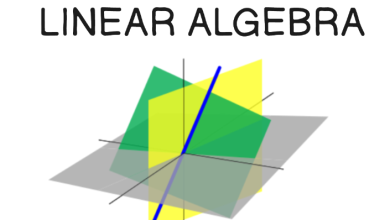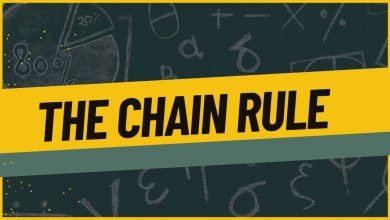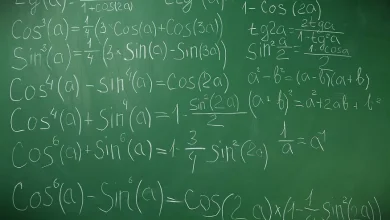Calculus Concepts: A Complete Guide

Calculus is a central branch of mathematics that studies change, motion, and accumulation. It provides essential tools for solving problems in physics, engineering, economics, computer science, and beyond. The subject is generally divided into two parts: differential calculus, which studies rates of change, and integral calculus, which focuses on accumulation and area under curves.
Below is a structured breakdown of calculus concepts into 8 major units with detailed explanations of each topic.
Unit 1: Limits and Continuity
Limits form the foundation of calculus, describing how a function behaves as its input approaches a particular value. Continuity ensures smooth and unbroken function behavior.
Introduction to Limits
A limit describes the value a function approaches as input values get close to a certain number. For instance:
Evaluating Limits Algebraically
Techniques include substitution, factoring, rationalization, and L’Hôpital’s Rule. These methods help solve indeterminate forms like
Continuity of Functions
A function is continuous at
if:
One-Sided and Infinite Limits
One-sided limits study behavior from the left (
) or right (
). Infinite limits describe unbounded growth, often leading to vertical asymptotes.
Unit 2: Derivatives – Definition and Basic Rules
Derivatives represent the instantaneous rate of change of a function, often interpreted as the slope of the tangent line.
Definition of the Derivative
Power Rule, Product Rule, and Quotient Rule
-
Power Rule:
-
Product Rule:
-
Quotient Rule:
Derivatives of Polynomial, Exponential, and Logarithmic Functions
-
Polynomials: straightforward via power rule.
-
Exponentials:
-
Logarithms:
Unit 3: Derivatives – Chain Rule and Advanced Topics
More advanced techniques allow differentiation of composite or implicit functions.
Chain Rule
If
, then
Implicit Differentiation
Used when
is not isolated. Example:
→
Higher-Order Derivatives
Second derivative (
) measures concavity and acceleration. Higher orders model complex physical behavior.
Related Rates Problems
Apply derivatives to real-world problems involving time-dependent change, e.g., water filling a tank or a ladder sliding down a wall.
Unit 4: Applications of Derivatives
Derivatives are powerful tools for optimization, curve analysis, and approximation.
Critical Points and Extrema
Critical points occur when
or undefined. They help identify maxima and minima.
Mean Value Theorem
Guarantees that at some point, the instantaneous rate of change equals the average rate of change.
Curve Sketching
First and second derivatives determine increasing/decreasing behavior, concavity, and inflection points.
Optimization Problems
Used in economics (maximizing profit), physics (minimizing energy), and everyday scenarios.
Unit 5: Analyzing Functions
This unit focuses on deeper understanding of function behavior.
Increasing and Decreasing Intervals
If
, the function is increasing; if
, it is decreasing.
Concavity and Inflection Points
Second derivative test:
-
→ concave up.
-
→ concave down.
Inflection points occur where concavity changes.
Asymptotes and End Behavior
Horizontal, vertical, and slant asymptotes describe long-term function behavior.
Graph Analysis with Derivatives
Combining all above tools produces a detailed sketch of functions.
Unit 6: Integrals
Integrals are the reverse of derivatives, representing accumulation.
Antiderivatives and Indefinite Integrals
where
Definite Integrals and Area Under Curves
represents the signed area under a curve between
Fundamental Theorem of Calculus
Connects derivatives and integrals:
Techniques of Integration
-
Substitution (reverse chain rule)
-
Integration by parts
-
Partial fractions decomposition
Unit 7: Differential Equations
Equations involving derivatives describe dynamic systems.
Introduction to Differential Equations
Basic form:
Separation of Variables
→ rearranged and integrated.
First-Order Linear Equations
Solved using integrating factors:
Applications
Modeling population growth, radioactive decay, Newton’s Law of Cooling, and financial models.
Unit 8: Applications of Integrals
Integrals solve real-world problems involving geometry, physics, and probability.
Volumes of Solids of Revolution
Formulas:
-
Disk method:
-
Shell method:
Arc Length and Surface Area
Arc length:
Work, Force, and Energy Problems
Integrals measure work done by variable forces, fluid pressure, and energy storage.
Probability and Statistics Applications
Probability density functions (PDFs) use integrals to calculate probabilities over intervals.
Summary Table of Calculus Concepts
| Unit | Main Topics | Quick Explanation |
|---|---|---|
| Unit 1: Limits and Continuity | Introduction to limits, evaluating limits, continuity, one-sided & infinite limits | Defines function behavior near a point, ensures smooth graphs without breaks |
| Unit 2: Derivatives – Basics | Definition of derivative, power rule, product & quotient rules, derivatives of polynomials, exponentials, and logarithms | Measures instantaneous rate of change (slope) with basic differentiation rules |
| Unit 3: Advanced Derivatives | Chain rule, implicit differentiation, higher-order derivatives, related rates | Tools for complex differentiation, motion, and time-related problems |
| Unit 4: Applications of Derivatives | Critical points, extrema, Mean Value Theorem, curve sketching, optimization | Analyzing graphs, maximizing or minimizing values, solving real-world optimization |
| Unit 5: Analyzing Functions | Increasing/decreasing intervals, concavity, inflection points, asymptotes, graph analysis | Deeper analysis of graph shapes and behaviors using first and second derivatives |
| Unit 6: Integrals | Antiderivatives, indefinite & definite integrals, Fundamental Theorem of Calculus, techniques of integration | Reverse process of differentiation, measures accumulation and area under curves |
| Unit 7: Differential Equations | Separation of variables, first-order linear equations, real-world models | Equations involving derivatives to describe growth, decay, physics, and finance |
| Unit 8: Applications of Integrals | Volumes of solids, arc length, work & energy problems, probability | Applies integrals to geometry, physics, and probability/statistics |
Conclusion
The concepts of calculus—limits, derivatives, and integrals—form the backbone of mathematical analysis. By mastering both theoretical foundations and real-world applications, students and professionals gain powerful tools to model and solve complex problems across disciplines.




